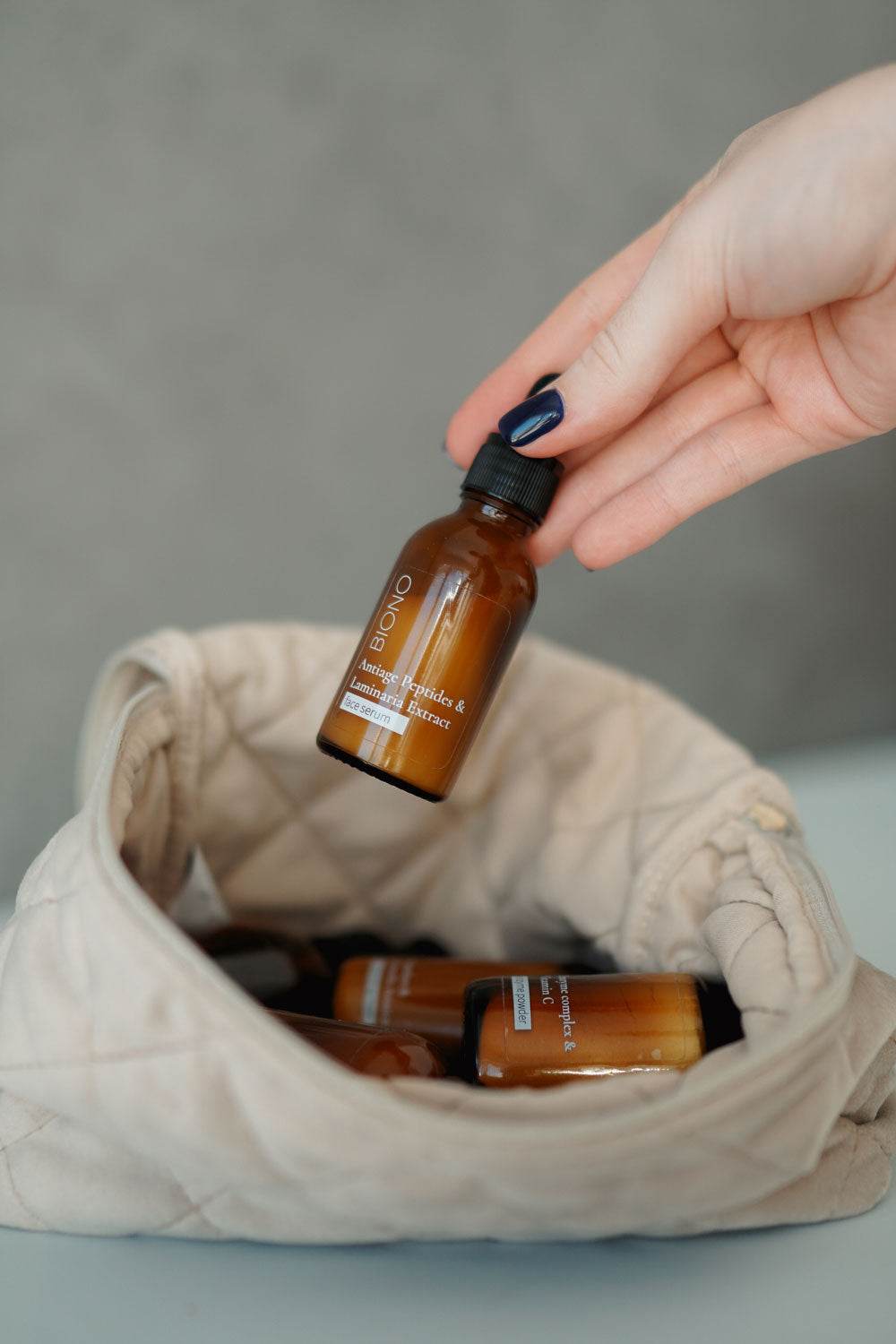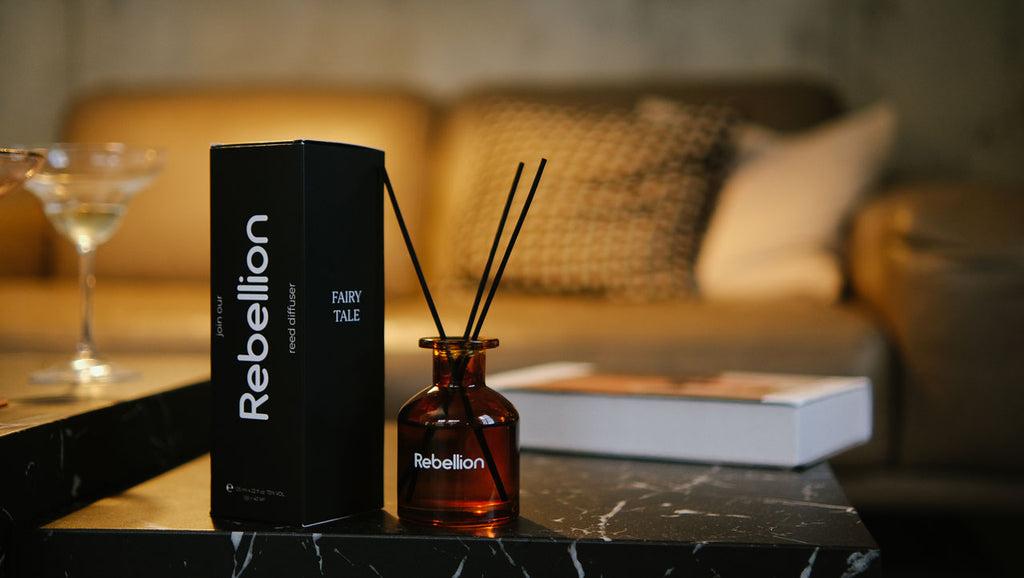
How to Remove Closed Blackheads: Effective Skin Cleansing Methods
Share
Closed comedones are one of the most common problems faced by people with oily and combination skin. They can remain under the skin for a long time without causing inflammation, but they can also make the complexion appear uneven and dull. If left unaddressed, they can develop into painful inflammations and leave scars.
Proper skincare will not only help clear up existing blackheads but also prevent them from forming in the future. In this article, we'll discuss why closed blackheads appear, which skincare methods are most effective, and how to keep your skin smooth and healthy.
Home care for acne-prone skin – how to avoid mistakes?
Consistency in your daily skincare routine is crucial in combating closed comedones, but it's equally crucial to avoid mistakes that can undermine all your efforts. Many people unknowingly worsen their skin condition by using the wrong cosmetics or skipping basic skincare steps. Therefore, it's worth knowing what to look for to avoid the opposite effect.
The most common mistakes include overly aggressive cleansing, which can damage the hydrolipid barrier and lead to overproduction of sebum. Equally problematic are excessive mechanical exfoliation and a lack of hydration—even on oily skin. Dehydrated skin reacts defensively, producing even more sebum, which only promotes the formation of new comedones.
To effectively support your skin in the fight against imperfections, it is worth:
- avoid cosmetics with alcohol and strong detergents,
- choose products labeled "non-comedogenic",
- introduce gentle AHA, BHA or PHA acids into your care,
- regularly moisturize the skin with light creams,
- limit touching your face and ensure the hygiene of your accessories (e.g. pillowcases, phone),
- observe skin reactions and avoid applying excessive amounts of cosmetics at once,
- use sun protection to prevent inflammation and discoloration.
How to properly cleanse your skin to avoid blackheads?
Cleansing is one of the most important steps in skincare , especially if you're prone to blackheads. Properly selected products help remove excess sebum, dead skin cells, and impurities that can lead to clogged pores. If the skin isn't cleansed properly, even the best cosmetics won't be effective, and the blackhead problem can worsen.

Remember that your skin produces sebum throughout the day, and dust, smog, and makeup residue accumulate on its surface. Improper cleansing leads to the accumulation of these impurities, which contributes to the formation of closed comedones. Therefore, it's important to implement effective cleansing methods that not only remove dirt but also help prevent future skin problems.
1. Double cleansing – an effective way to thoroughly remove impurities
Double cleansing is a skincare method that involves using two different facial cleansers. It's especially effective for those with oily and blackhead-prone skin, as it thoroughly removes both oily and water-based impurities.
First stage – dissolving sebum and cosmetics
Hydrophilic oils or micellar water are best for this purpose, as they help dissolve makeup, UV filters, and sebum. Hydrophilic oils work on the "fat dissolves fat" principle, meaning they effectively cleanse pores of accumulated impurities without disrupting the skin's hydrolipid barrier.
Second stage – removal of water impurities and deep cleansing of pores
After using an oil or micellar water, thoroughly wash your face with a gel or foam cleanser. It's best to choose products without harsh detergents (SLS and SLES), which can excessively dry out the skin and cause irritation.
Regular double cleansing helps remove deep-seated impurities and prevents the formation of new blackheads.
2. Acid cosmetics – how do they work and why are they effective?
AHA, BHA, and PHA acids are among the most effective ingredients in the fight against blackheads. They work by chemically exfoliating dead skin cells, preventing clogged pores and improving skin texture.
Salicylic acid (BHA) – has anti-inflammatory properties and can penetrate deep into pores, dissolving excess sebum and dead skin cells. It's an ideal ingredient for those with oily and acne-prone skin, as it reduces the risk of inflammation.
Glycolic and lactic acids (AHAs) work on the skin's surface, helping to exfoliate dead cells and smooth the complexion. They leave the skin looking fresh and healthy, and allow active ingredients from other cosmetics to be better absorbed.
Gluconolactone (PHA) – a gentler alternative to AHA and BHA acids, recommended for those with sensitive skin. It helps maintain skin's moisture balance while cleansing pores.
Acids can be found in facial cleansers, toners, serums, and masks, and using them regularly helps reduce the number of blackheads and prevent their re-formation.
3. Clay masks – a natural solution for blackhead-prone skin
Clay masks are an excellent way to cleanse the skin of excess sebum and toxins. Clays work by absorbing impurities, drawing them out of pores and mattifying the complexion.
- Green clay – most effective at regulating sebum production, recommended for those with oily and problematic skin. It also has antibacterial and pore-tightening properties.
- White clay (kaolin) – ideal for sensitive and combination skin, as it cleanses the skin in a gentler way while providing it with minerals.
- Blue clay – has detoxifying and regenerating properties, making it perfect for skin with imperfections.
For best results, clay masks should be used 2-3 times a week, not allowing them to dry completely on the skin (you can spray your face with thermal water).
4. Cleansing pores with steam
Homemade steam baths are a simple and effective way to open pores and facilitate cleansing. They can be performed before applying a clay mask or gentle exfoliation to enhance the effectiveness of the active ingredients.
How to make a sausage?
- Boil water and pour it into a bowl.
- Add herbs (e.g. chamomile, sage, lavender) or a few drops of essential oil (e.g. tea tree oil).
- Lean your head over the bowl and cover it with a towel.
- Stay in this position for 5-10 minutes, allowing the steam to open your pores.
After steaming, it is worth using a cleansing mask or gently removing blackheads with a special cosmetic spatula.
5. What should you avoid when caring for blackhead-prone skin?
Even the best cosmetics won't help if you don't address skincare mistakes. Here are the most common pitfalls that can contribute to blackheads:
Using aggressive cosmetics – strong cleansing agents can damage the skin’s protective barrier, causing it to dry out and increase sebum production.
Excessive exfoliation – using mechanical exfoliators daily can lead to micro-damage and weakening of the skin.
Improper diet – excess sugar, fast food and dairy products can cause disturbances in the functioning of the sebaceous glands and contribute to the formation of blackheads.
In summary, proper cleansing is key to healthy and radiant skin. It's worth using double cleansing, acid-based cosmetics, and clay masks to effectively remove impurities and prevent clogged pores.

Peeling and exfoliation: how to accelerate skin renewal?
Closed comedones often appear as a result of a buildup of dead skin cells. To prevent these cells from blocking the natural regeneration process, it's important to regularly use exfoliating products.
✔ Chemical peels – these contain acids (salicylic, lactic, and mandelic) that penetrate deep into the skin, dissolving accumulated sebum. This is one of the most effective ways to combat closed comedones.
✔ Enzyme peels – suitable for sensitive skin because they contain natural enzymes (papain, bromelain) that gently remove dead skin without irritation.
✔ Mechanical exfoliators – can be used 1-2 times a week, but only if the skin is not inflamed. It's best to choose exfoliators with fine particles that won't irritate the skin.
Moisturizing Without the Weight: How to Avoid Clogging Pores?
Many people with oily and combination skin avoid moisturizing, believing it leads to blackheads. In reality, a lack of moisture causes the skin to produce even more sebum, which only worsens the problem.
✔ Lightweight moisturizing gels and creams – ideal for problematic skin. Look for ingredients like hyaluronic acid, aloe vera, panthenol, and centella asiatica.
✔ Non-comedogenic oils – jojoba oil, squalane or grape seed oil do not clog pores, on the contrary – they support skin regeneration.
✔ Niacinamide – one of the most effective ingredients for blackhead-prone skin. It regulates sebum production, has anti-inflammatory properties, and improves skin condition.
Professional methods for removing closed comedones
If home care doesn't produce the desired results, it's worth consulting a cosmetologist. Professional treatments will help effectively cleanse the skin and prevent further lesions.
Manual or ultrasonic cleansing – removes deeply embedded blackheads that cannot be removed with cosmetics.
Chemical peels – performed in beauty salons, contain higher concentrations of acids, which effectively renew the skin and reduce the number of blackheads.
Laser therapy and phototherapy – help reduce inflammation and regulate the function of the sebaceous glands.
How to prevent the formation of closed comedones?
Prevention is the best way to avoid blackheads. Just follow a few simple rules to improve your skin's condition.
- Regular cleansing – don’t forget to remove your makeup and wash your face in the morning and evening, especially if you use color cosmetics.
- Balanced diet – limit your intake of sugar, fatty foods and dairy products, which can exacerbate the development of skin lesions.
- Hygiene – change your pillowcases regularly, avoid touching your face with dirty hands and disinfect your cell phone.
- Stress reduction – high cortisol levels stimulate sebum production, which can lead to blackheads. Meditation, physical activity, and adequate sleep can help manage stress.
How to effectively get rid of closed blackheads – a care summary
Closed comedones are a problem that requires a consistent and well-thought-out skincare approach. Regular cleansing, exfoliation, and the use of lightweight, non-comedogenic cosmetics are key elements of a daily routine that can significantly improve skin condition. It's also important to understand the causes of comedones and avoid mistakes that can exacerbate the problem.
Effective skincare involves not only removing existing blemishes but, above all, preventing their recurrence. Using cosmetics with acids, clay masks, and proper skin hydration support the skin's renewal process and restore balance. A well-balanced skincare routine produces visible results – skin becomes smoother, more radiant, and more resistant to imperfections.
It's important to remember that there's no one-size-fits-all method for combating blackheads. Everyone's skin reacts differently, so observing its needs and being patient are essential. If necessary, it's worth seeking professional help to choose the right treatments and products. Healthy, clear skin is the result of daily care, not short-term solutions.






